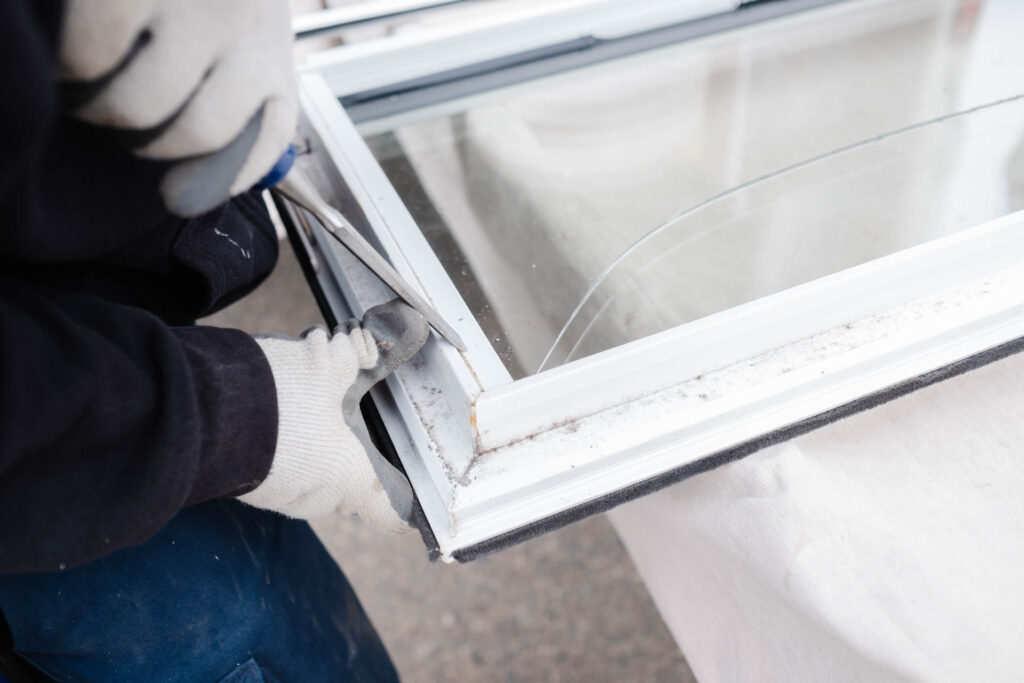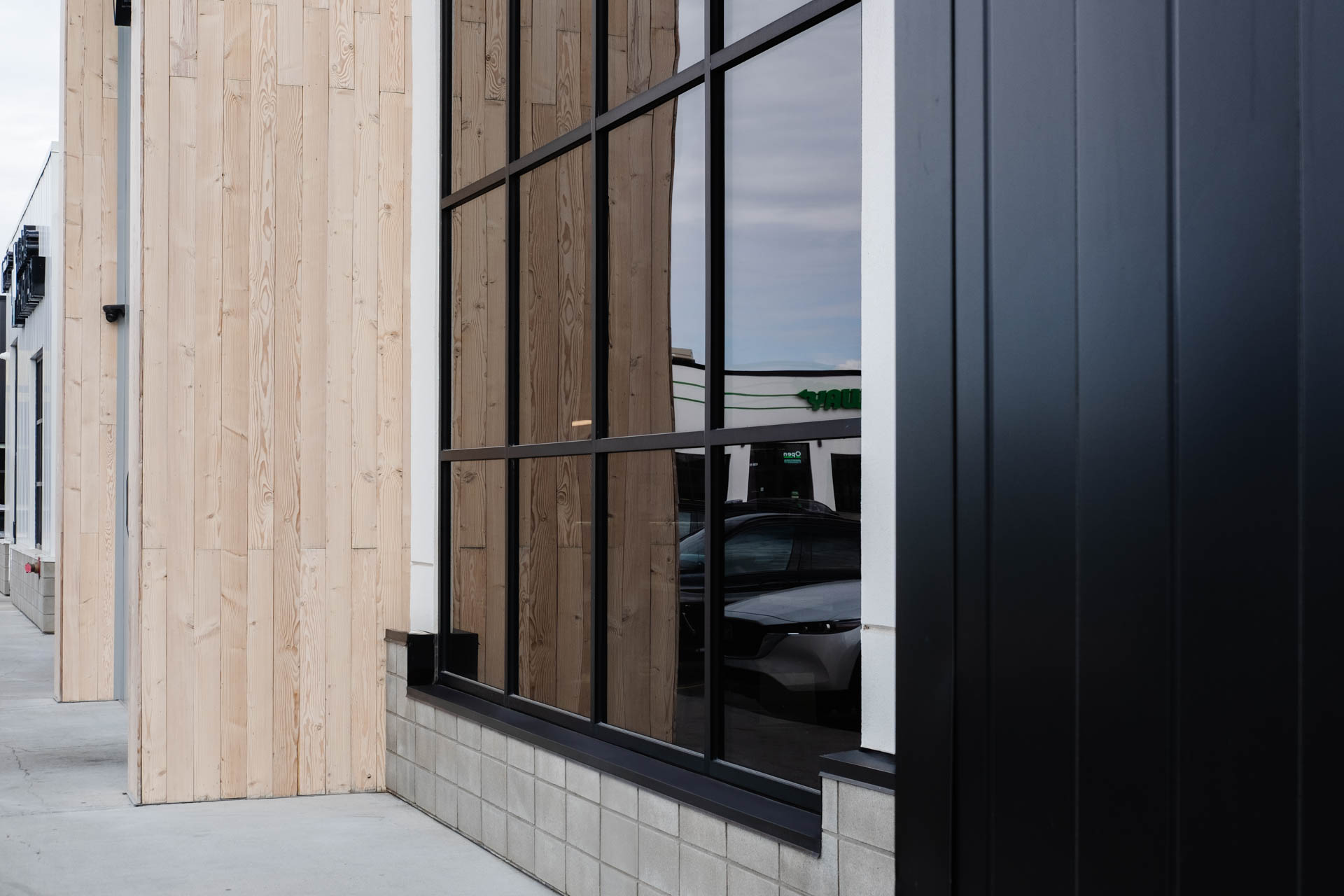The world of commercial building materials often feels shrouded in technical jargon and confusing specifications. For a property manager, a building owner, or a developer, few areas are as critical, and yet as misunderstood.
We’re Glacier Glass, and after over four decades of securing buildings in Regina and across Saskatchewan, we’ve heard every question in the book. But there is one question that comes up with increasing frequency, especially as severe weather becomes more common and security concerns evolve: how to tell if a window is impact rated.
It’s not just a technical query; it’s a question about due diligence, insurance liability, and, ultimately, peace of mind.

The Definitive Answer: Look for the "Bug"
In Canada, the single most critical piece of evidence that a window is truly impact-rated is a permanent, inscribed certification mark, often called a “bug” or “label,” found directly on the glass or the spacer bar of a sealed unit.
This mark is not just a brand name; it is the verifiable proof that the glass assembly, the glass, the interlayer, and even the framing system, has been tested by an accredited agency to meet specific performance standards.
The Key Canadian Standards
While many products sold in Canada adhere to US-based standards like ASTM E1886 and ASTM E1996 (which define resistance to large missile impact and cyclic wind pressure, crucial for high-wind areas), the ultimate compliance in Canada is tied to the Canadian General Standards Board (CGSB) and related codes.
For basic safety glazing (which is not the same as high-level impact-resistance, but is the starting point):
- CAN/CGSB-12.1: This is the National Standard of Canada for Safety Glazing. It defines laminated and tempered glass that prevents injury from human impact, such as a person walking or running into the glass. This is a minimum requirement in many hazardous locations (like doors and low-level windows).
For true, engineered impact-resistance against windborne debris or forced entry, you must look for the certification that goes beyond CAN/CGSB-12.1 to prove it can withstand a large force without breach.
What the Label Should Show (For High-Performance):
- Laminated Glass Designation: The glass must be structurally laminated (multiple panes with a high-strength plastic interlayer). The label will indicate this type of construction.
- Specific Performance Codes: Look for references to performance tests, typically the international standards used in fenestration, like ASTM E1886 and ASTM E1996, which simulate destructive wind and debris scenarios.
- Manufacturer & Certifying Body: The mark will identify the manufacturer and often the third-party certification agency (like CSA Group, IGMA, or NFRC) that validated the performance.
The Golden Rule: If the glass product does not carry a permanent mark that explicitly references its laminated construction and compliance with the necessary high-impact resistance tests, you cannot verify it is impact-rated. Certification is not optional, it’s mandatory for the designation.

Debunking the Myths
It’s easy to fall for marketing jargon. In the Canadian context, here are the most persistent and costly myths we hear from commercial clients:
Myth 1: "Tempered Glass is Impact-Rated"
False. In Canada, tempered glass is classified as Safety Glass (under CAN/CGSB-12.1) because it breaks into small, harmless pieces, reducing the risk of cutting or piercing injury. It is designed to shatter safely upon high-force impact. This means it offers excellent occupant protection, but zero security or weather barrier protection once broken.
Myth 2: "Wired Glass is Impact-Rated for Security"
False. Wired glass is also classified as safety glass in Canada, primarily used for fire-rated applications because the wire mesh holds the glass fragments in place during a fire. However, the mesh itself offers minimal resistance to a significant impact (like a windborne piece of wood or a hammer) and will often fail the rigorous impact tests needed for true commercial resilience
Myth 3: "A High DP Rating Means It's Impact-Rated"
False. DP (Design Pressure) ratings, common under the Canadian CSA A440 Series standards, measure a window’s ability to resist static wind pressure and water penetration. A high DP rating means the window frame and installation are strong, but it does not confirm the glass itself will not break and fail against a missile impact (a concentrated, destructive force). An impact rating requires an entirely separate, aggressive test involving projectiles.
The Science of the Shield: Laminated Glazing
The core science behind true impact-rated glass, the kind that gives you peace of mind during a severe prairie windstorm or a forced entry attempt, is laminated glass.
Unlike monolithic (single-pane) glass, laminated construction employs a powerful polymer interlayer, such as PVB (Polyvinyl Butyral) or SGP (SentryGlas Plus), bonded between two or more sheets of glass.
Here’s why this construction is non-negotiable for commercial impact rating:
- Energy Absorption: The outer layer of glass takes the initial blow, absorbing the force by cracking.
- Containment: The flexible interlayer then prevents the projectile from passing through. It sacrifices itself by stretching and deforming, but it holds the broken glass shards tightly in place within the frame.
- Maintaining the Envelope: Even in a heavily cracked state, this laminated shield maintains the building’s air and water seal, preventing wind and rain from entering, which prevents catastrophic internal pressure changes and water damage, a critical factor for commercial continuity in Canadian weather.
When Glacier Glass talks about Unbreakable Glass for commercial applications, we are specifying these high-grade laminated systems that have been rigorously tested to Canadian-relevant performance benchmarks, providing superior protection against both the elements and intrusion.

Your Commercial Imperative
For commercial clients in Canada, understanding how to verify impact rating is an essential step in responsible asset management.
By demanding and verifying the appropriate permanent certification marks referencing laminated construction and high-performance impact standards, you are ensuring:
- Compliance and Safety: You meet all necessary provincial and national building codes for occupant safety (CAN/CGSB-12.1) while exceeding them with true impact resistance where security or exposure demands it.
- Risk Mitigation: You actively protect your building against forced entry and Canada’s increasingly unpredictable severe weather events, minimizing catastrophic damage and downtime.
- Insurance Liability: Certified, impact-rated glass provides clear, documented proof of due diligence, which can significantly influence your commercial insurance premiums and liability posture after an incident.
Don’t settle for “looks sturdy” or “feels heavy.” In commercial glazing
The Glacier Glass team has been installing and servicing certified, high-performance commercial glass in Regina and across Saskatchewan since 1979. We understand the unique challenges of the Canadian climate and the specific needs of the commercial sector.
Stop by, give us a call, or shoot us a message. We’ll take a look, give you transparent advice, and help you get back to enjoying the view – crack-free.
Main Office
Store Hours
Monday – Friday | 8am – 5pm
